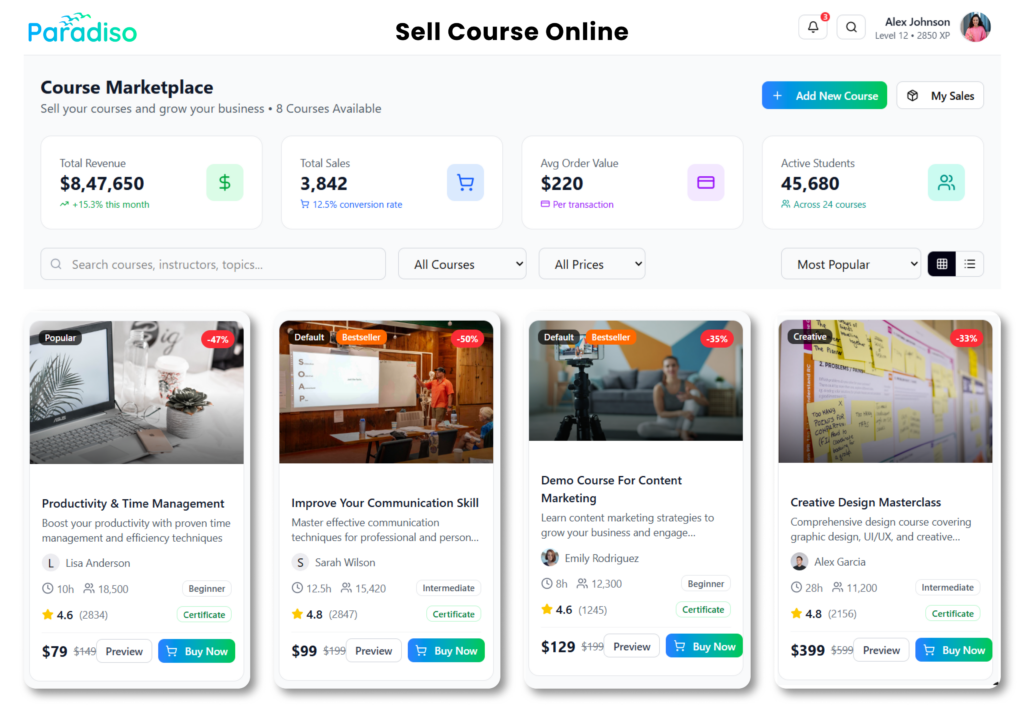How we learn has gradually changed, but it’s recently gained massive attention. The convenience of new technology, such as online learning platforms, easy access to resources through smartphones and WiFi, and the impact of staying at home, has sparked a learning revolution. These changes have made organizations prioritize the development of a learning management system (LMS).
However, there often needs to be more clarity about the different learning methods, mainly hybrid and blended learning, when setting up an LMS. The names may sound similar, but they involve different approaches. Before deciding whether to include them in your LMS, it’s essential to understand their definitions and see if they share any similarities.
When discussing hybrid and blended learning, we consider their effective methods of combining different elements. Hybrid learning combines in-person and online learning, while blended learning integrates traditional classroom instruction with online components. By defining these terms, we can better determine similarities and differences between blended and hybrid learning and whether they suit your LMS.
Let's discover The Key Difference Between Hybrid Learning and Blended Learning
Blended and hybrid learning involves combining in-person and online learning, but they have a crucial difference. Blended learning uses online resources to enhance in-person classes, such as videos, articles, and podcasts, making the learning experience more engaging.
On the other hand, hybrid learning replaces a portion of in-person classes with online learning. Online material becomes a central part of the training plan, substituting in-person materials. This approach provides greater flexibility in how you learn. Understanding this distinction helps you choose the proper distance learning method for you and your class. Whether you prefer the added support of online resources in blended learning or the substitution of in-person classes with online materials in hybrid learning, both approaches offer unique benefits to enhance your educational journey.
What is Hybrid Learning and What Does it Cover?
Traditional learning has its limitations, as it only suits some learners. That’s where hybrid education and blended learning come in. Hybrid learning combines traditional classroom experiences, eLearning course delivery, and experiential learning objectives. This holistic approach ensures that students get a well-rounded education.
Understanding the differences between hybrid and blended learning can help you find the right fit for your learning needs. These innovative approaches aim to make learning more accessible, engaging, and tailored to individual preferences.
What is Blended Learning, and What Does it Cover?
Blended learning combines traditional learning with online learning. In online programs, learners take charge of what and how they learn. In traditional learning, they attend in-person classes and receive direct instruction from the trainer. Collaboration among learners improves blended learning. Group activities are based on what they learned online, enhancing teamwork.
Blended learning offers several benefits. It is cost-effective, reducing training expenses for organizations. They save on facilitator fees, accommodation, and transportation costs. Additionally, blended learning allows learners to learn at their own pace, promoting better knowledge retention. Users have complete control over their learning experience.
Benefits of Blended and Hybrid Learning That Helps You to Take Data-Driven Decision
A. Benefits of Hybrid Learning
1. Easy Access To Learning Modules
2. Enhance Learning without Breaking the Bank
3. Learn Safely and Stay Connected Amidst Health Concerns
B. Benefits of Blended Learning
1. Effortlessly Integrate Multimodal Learning Approaches:
2. Empower Learners through Personalized Training:
3. Instructive Approaches That Improve Engagement:
Strategies for Successfully Implementing Blended Learning and Hybrid Learning
As many organizations move to remote work, trainers must adapt their learning plans for hybrid learning and blended learning. Regardless of your approach, here are some tips to help you implement them successfully and make learning effective.
1. Save in-person or live lesson time for collaborative group activities.
2. Enhance discussions with learner engagement tools.
3. Collect student feedback for the better learning experience
Conclusion
Paradiso LMS believes that blending different learning methods is powerful. Blended learning combines online tools with classroom training, letting users explore and follow their paths. Trainers bring lessons to life. Hybrid learning focuses on the most effective course delivery for each company, focusing less on technology. Our platform integrates both blended and hybrid learning features. We offer training providers the flexibility to combine online and offline learning. With hybrid learning gaining popularity, we want to support our customers in their preferred learning styles.
Contact us to learn more about blended learning vs. hybrid learning.














